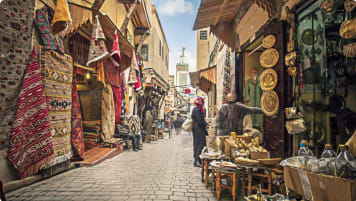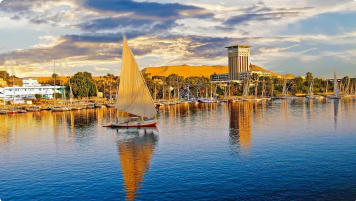The Rosetta Stone: Decoding the Secrets of Ancient Egypt
Learning about the Rosetta stone, part of the deep history of Egypt An Antipodean travel company serving World Travellers since 1983 with small group educational tours for senior couples and mature solo travellers.
18 Jul 23 · 7 mins read

The Rosetta Stone
The Rosetta Stone is an ancient Egyptian stone slab discovered in 1799 by a French officer near the town of Rosetta, or Rashid. Until this point, we knew very little of the ancient Egyptians. But this would all change with this one discovery. Bearing the inscriptions of the same text translated in three different scripts – ancient Egyptian hieroglyphs, Egyptian Demotic script, and ancient Greek – the stone made possible, for the first time, the ability to crack the hieroglyphic code. By translating the other scripts, experts learnt to understand Egyptian hieroglyphic writing, thereby granting humanity access to the ancient Egyptian world view, culture, and economic system.
This article explores the Rosetta Stone’s discovery, contents, and how the Egyptian hieroglyphic code was finally cracked. It is intended as background reading for Odyssey Traveller’s 18-day small group escorted history and culture tour of Egypt for mature and senior travellers. This tour explores Egypt‘s stunning natural beauty, ancient history, imperial heritage, World Heritage Sites, and famous cities. Along the way, we engage with the best available Egyptologists and professional guides, who share their deep knowledge of the archaeology, history, and state of contemporary Egypt.
Read on to find out more! And if you’re further interested, do check out Terje Tvedt’s The Nile: History’s Greatest River, which was used in the writing of this article.
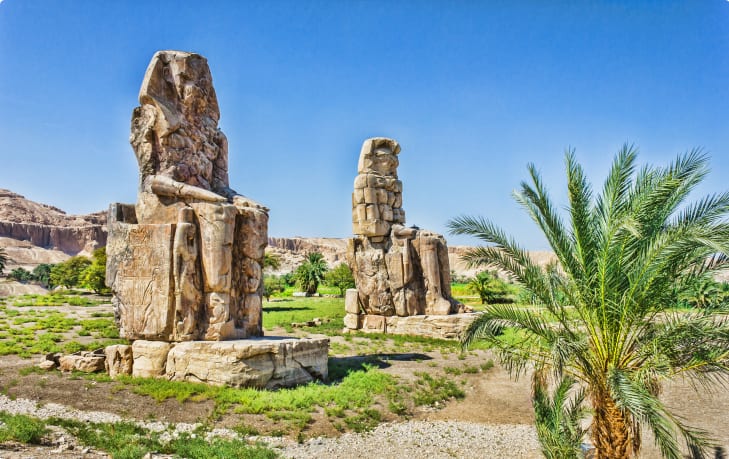
Discovering the Rosetta Stone
The Rosetta stone was originally carved during the Hellenistic Period and believed to have been displayed in a temple. It was then most likely moved around in late antiquity before eventually being used as a building material in the construction of the 15th century Ottoman Fort Julien, located near the town of Rosetta. It was not until over 400 years later in mid-July 1799, during the Napoleonic campaign in Egypt, that the stone would be discovered again.
French soldiers discovered the black block of basalt while digging foundations to strengthen Fort Julien’s defences. The officer in charge, Pierre-François Bouchard (1771–1822), immediately realised this could provide a valuable contribution to Napoleon’s cultural expedition and sent a message to the French commander, General Menou. The discovery was also reported to the newly established L’Institut d’Egypte, and Napoleon himself examined the stone before returning to France in August 1799.
There was enormous hype. The French had found a stone of world-historic significance – the first Ancient Egyptian bilingual text. Here was the potential to finally decipher the previously untranslated hieroglyphic script.
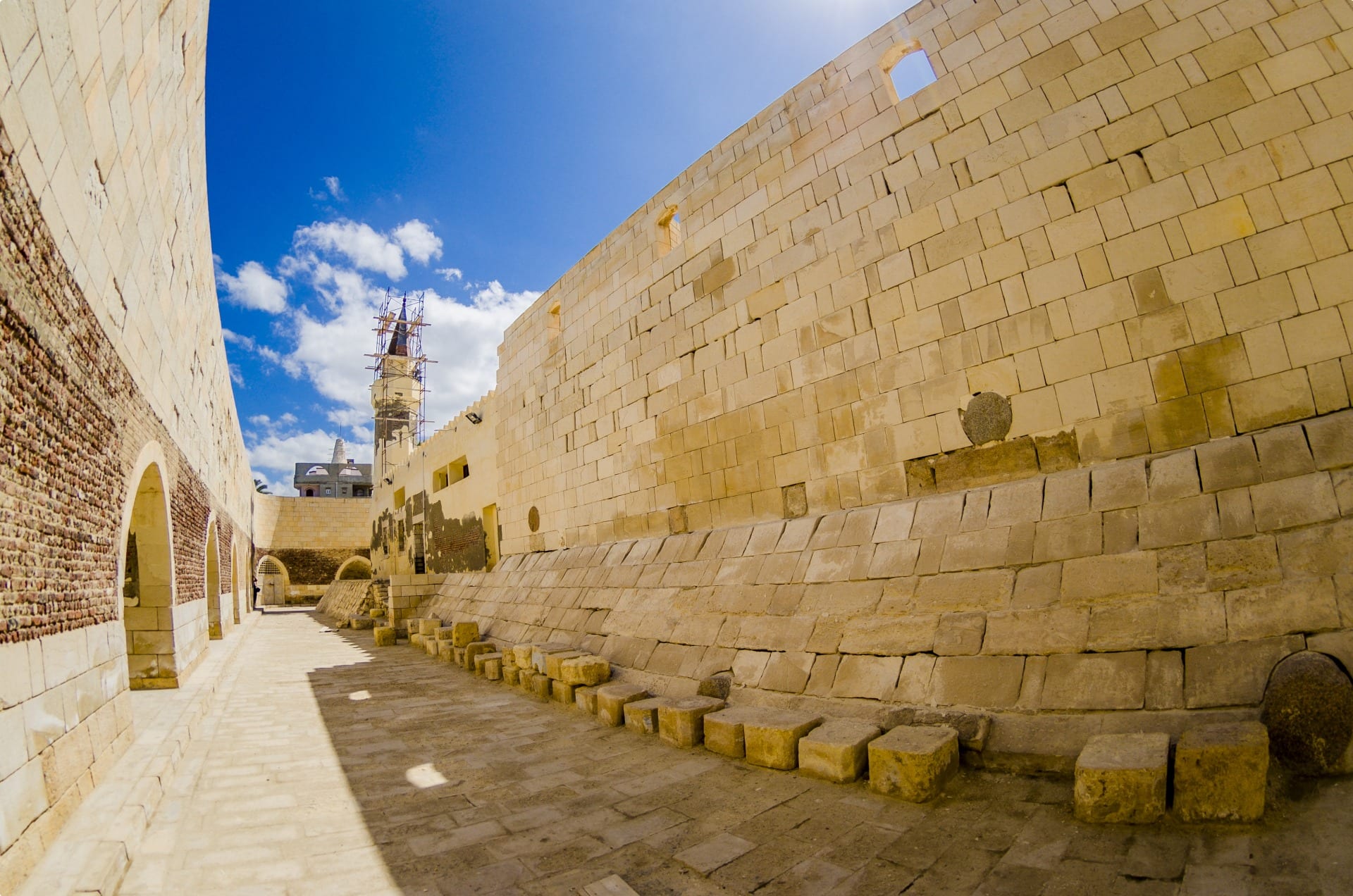
The British Seize the Stone
After Napoleon travelled back to Paris, French land troops continued to defend themselves for another 18 months against a combined British and Ottoman attack. In March 1801, however, new British troops arrived in Abukir Bay, outside Rashid. General Menou and his soldiers marched towards the Mediterranean Coast to meet the enemy. Along with them went the spoils of war, including the stone and other antiquities. But the French could not withstand the British and lost the battle, with Menou retreating to Alexandria before surrendering on 30 August 1801.
At that point, a struggle ensued over the ownership of the Rosetta Stone and other antiquities. Tvedt writes the British knew “the power to be gained in controlling such symbols of the past and in dominating history’s interpretation”. Menou refused to relinquish them though, arguing they belonged to the French Institute. In response, the British General John Hely-Hutchinson stood his ground, refusing to withdraw from the city under the French general surrendered the stone. They were the victors, he argued, and so all the antiquities were the property of the British crown.
The French were eventually forced to yield, and the ceding of the antiquities became part of the ‘Capitulation of Alexandria’. Menou, however, insisting the stone was his property had attempted to hide it. The British were only able to recover it with the help of a French officer, who secretly directed them to where it was concealed in the yard behind Menou’s residence. With the stone now in possession of the British, they transported it to London, placing it in the British museum, where its has been ever since.

What Does the Rosetta Stone Say?
The inscription on the Rosetta Stone is a decree in the name of King Ptolemy V Epiphanes (204-180 BCE), written on the first anniversary of the king’s coronation (in 196 BCE). It was written by a council of priests from around Egypt, representing the outcome of the negotiation of authority between the collected associations of Egyptian priests and the royal house of the Ptolemies – two very powerful groups. As such, it affirms Ptolemy V’s royal cult, while also summarising the benefactions conferred on the Egyptian religious administration, including financial support for temples and increased priestly stipends.
The Rosetta Stone is one of many identical mass-produced stone slabs called stelae designed to disseminate this agreement. It was decreed that a copy was to be placed in every sizeable temple across Egypt. It’s unknown exactly how many were produced, but several copies of this same three-script decree have been discovered and are now held in different museums around the world.
The stones therefore were pieces of political propaganda, stating publicly Ptolemy V’s claim to be the rightful king of Egypt. They were produced in a period of open revolt in Egypt, with the masses resenting the Greek governing elite, who could neither speak the language of the people nor read hieroglyphs. The inscriptions on the stones were therefore meant to enhance the king’s legitimacy by demonstrating the support of the Egyptian priests. It was written in both Egyptian and Greek so that all the people could read and understand its content.
Cracking the Code
It’s not what the Rosetta Stone says that makes its discovery so significant though. Its immense importance actually lies in the opportunity it provided to translate ancient Egyptian hieroglyphs and so understand the Egyptian past. At the time it was discovered, no one knew how to translate Egyptian hieroglyphs. Here, however, was a stone not only inscribed in Egyptian hieroglyphs, but also Demotic script and ancient Greek – and it was predicted that each script may represent a translation of a single text.
This prediction was soon confirmed, with scholars who could still read ancient Greek translating the final sentence of the Greek description as reading, “Written in sacred [hieroglyphic], native [demotic], and Greek characters.” If it could be translated from ancient Greek then, it was possible, for the first time, to crack the hieroglyphic code.
A race thus ensued to translate the ancient Egyptian text. A significant step was taken when Thomas Young, an English physician, correctly deciphered the stone’s six identical cartouches, oval loops containing the hieroglyphs. By finding the corresponding name written in Greek, he was able to identify them as them as the name of Ptolemy.
This both confirmed a long-held hypothesis that cartouches in other inscriptions were the names of Egyptian royalty, as well as giving Young the translation of hieroglyphs for p, t, m, y, and s. Young was also able to figure out which way hieroglyphic signs are to be read through the direction in which the Egyptian bird and animal characters faced.

To the great irritation of the British, however, it would be a Frenchman who would crack the text completely. The young linguistic genius, Jean-François Champollion, had since childhood dedicated himself to ancient Egypt, and held a deep knowledge of the Coptic language, which derived from ancient Egyptian. Thus, he was able to realise the hieroglyphs indicated phonetic sounds of the Egyptian language. Using his knowledge of Coptic, he was first able to deduce the hieroglyphic writing of the word ‘to give birth’, and then set to work deciphering the hieroglyphic inscriptions fully.
Eventually, Champollion was able to establish an entire list of Egyptian symbols linked to their Greek equivalents. In doing so, he came the first Egyptologist to realise that the symbols were not only alphabetic, but some could be syllabic and some event determinative (representing a whole word or idea itself).
The important work of Young and Champollion, therefore, established the means to translate all Egyptian hieroglyphic texts. The hieroglyphic code had been cracked, and it was now possible to understand the world of the ancient Egyptians through the many texts that had survived over thousands of years.
Tour of Egypt
Odyssey Traveller visits Egypt on our 18-day escorted small group history & cultural tour of Egypt. This small group tour focuses on the history and culture of ancient Egypt, designed especially for mature-aged and senior travellers.
Other tour operators or tour companies may simply survey the archaeological sites and monuments to the Pharaohs and the Giza pyramids. Our Egypt tour, however, also visits contemporary feats such as the Aswan Dam and lets us witness landmarks of the contemporary Egyptian experience, such as Tahrir Square. These sites show that Egypt’s role as the pivot of civilisation is far from ended.
Visit Egypt with Odyssey Traveller on these escorted tours as we stand in awe of the symmetry and majesty of the Egyptians’ ancient pyramids from Luxor to Aswan, and discuss the country’s present-day experiences and accomplishments.
There is also the opportunity to visit our Morocco, Jordan or Iran tours before embarking on this tour of Egypt.
Odyssey Traveller has been serving global travellers since 1983 with educational tours of the history, culture, and architecture of our destinations designed for mature and senior travellers. We specialise in offering small group tours partnering with a local tour guide at each destination to provide a relaxed and comfortable pace and atmosphere that sets us apart from larger tour groups. Tours consist of small groups of between 6 and 12 people and are cost inclusive of all entrances, tipping and majority of meals. For more information, click here, and head to this page to make a booking.
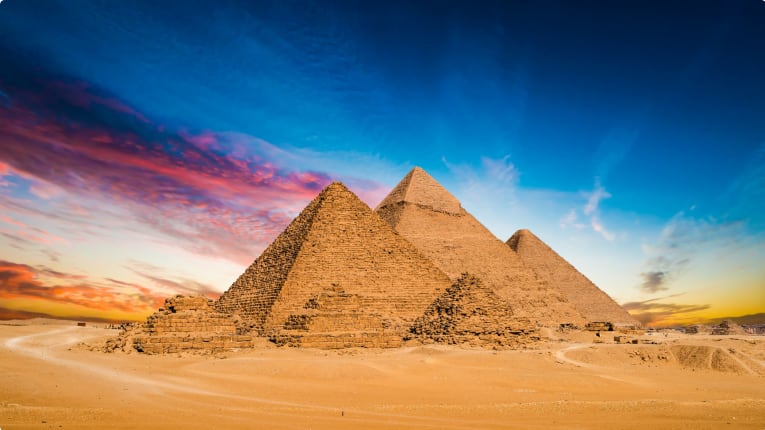
Articles about Egypt published by Odyssey Traveller.
- Uncovering Ancient Egypt: What we can learn from Egyptologists
- From Cairo to NAC: Egypt builds a new capital city
- Questions about Egypt: The Definitive Guide
- Egyptian Linen Treasures
- Discover Egypt with ten great books
- Cairo development site reveals ancient statue
- The time to visit Egypt is now
- Birth of the Nile River
- Caesar and Cleopatra in Egypt
External articles to assist you on your visit to Egypt
Related Tours
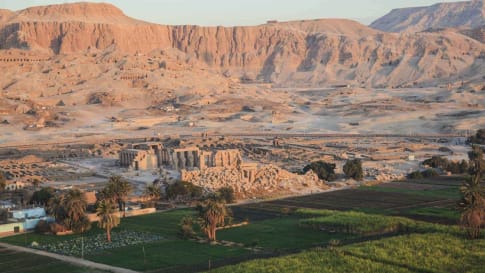
18 days
Nov, JanEgypt tour: escorted small group history & cultural tour of Egypt
Visiting Egypt
Our small group program for senior and mature couples and solo travelers takes us to contemporary feats such as the Aswan Dam and also to current crucibles of the Egyptian experience such as Tahrir Square. Proof, were it needed, that Egypt’s role as the pivot of civilisation is far from ended. There is the opportunity to visit our Morocco, Jordan or Iran tours before embarking on this tour of Egypt.
From A$12,950 AUD
View Tour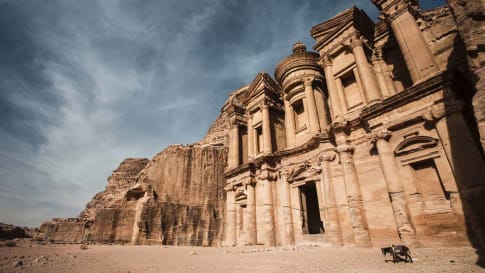
9 days
Jan, OctAncient History of Jordan | Escorted Small Group Tour
Visiting Jordan
Explore Jordan, visiting its capital city, Amman Jordan, the ancient Desert Castles, Petra and the Dead Sea on a small group package tour for mature and senior travellers travelling as a couple or Solo.
From A$6,750 AUD
View Tour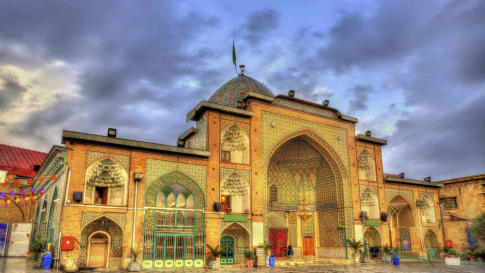
17 days
Sep, Nov, AprIran Culture and History Escorted Small Group Tour for seniors
Visiting Iran
Unlike its neighbours to the west and northwest, Iran had not adopted Christianity and it was the explosive spread of Islam and its ready adoption, without the Arabic language or customs, which helped unite the culture and greatly enrich Persian heritage. This small group tour program includes the great cities of Iran, historic sites, mosques, gardens, bazaars and teahouses for couples and solo travellers.
From A$11,825 AUD
View Tour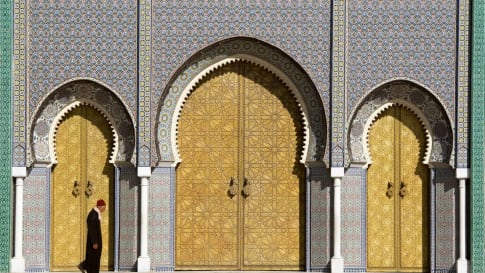
20 days
Apr, Oct, MarMorocco tour for senior travellers
Visiting Morocco
Embark on an unforgettable journey through Morocco: A Gateway to a world of vibrant colors, cultural diversity, and endless wonder. Join our escorted small group tour designed for senior travellers, whether you're a couple or a solo adventurer, and immerse yourself in the captivating allure of Casablanca, Fez, Meknes, Rabat, Marrakech and beyond. Experience the richness of Moroccan traditions and heritage as we explore this enchanting destination.
From A$11,915 AUD
View Tour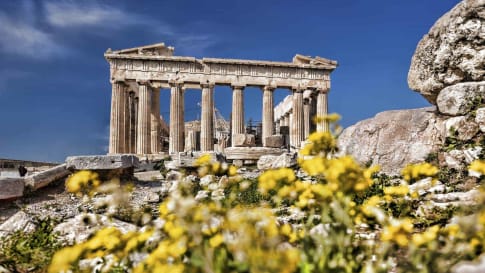
22 days
Apr, Sep, MayGreece small group escorted history tour
Visiting Greece
Our 22 day small group tour explores the land of great philosophers, myths, and legends. We will learn about the culture and heritage of modern Greece whilst exploring and learning Athens, which only found independence in its uprising from the Ottoman Empire in the 19th century.
From A$14,145 AUD
View TourRelated Articles
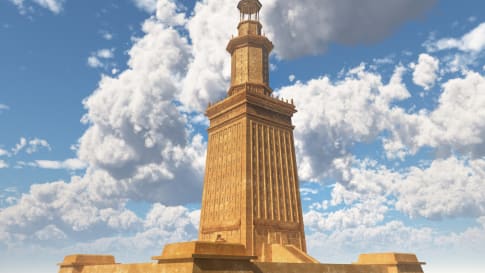
Alexandria, Egypt
Article for senior couples and mature solo travellers curious about Egypt, Greek and Roman history. Including the links to Venice and the trade in Spice and grain. Join a small group educational tour to learn and discover more.

Birth of the Nile River
The Nile, one of the world's great river systems for trade and agricultural production. Learn more about the river and its journey our across Egypt. An Antipodean travel company serving World Travellers since 1983 with small group educational tours for senior couples and mature solo travellers.

Caesar and Cleopatra in Egypt
Learn about the Roman Emperor Caesar exploring Egypt and the historians interpretation of the relationship with Cleopatra. An Antipodean travel company serving World Travellers since 1983 with small group educational tours for senior couples and mature solo travellers.
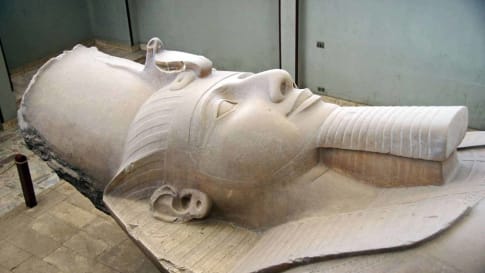
Egyptian linen treasures
Egyptian linen treasures Egypt has long held a place in the imagination of curious travellers. Many of us were introduced to the stories of pyramids, pharaohs and buried treasure as children, and since then, books…
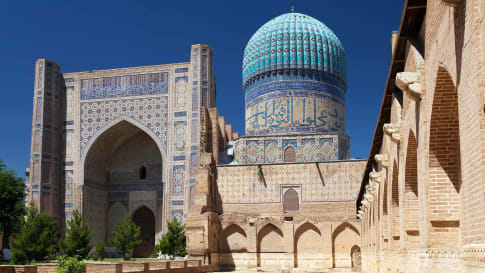
Elements of Mosque Architecture
The word "mosque" often brings to mind not this simple prayer space, but the ornately decorated monuments built by powerful Islamic rulers.
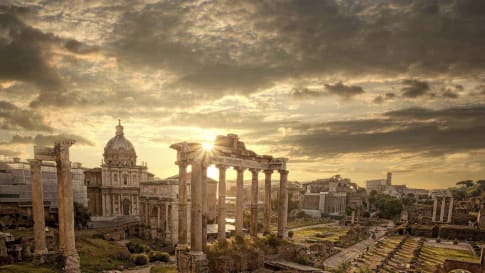
Exploring Ancient Cities
Exploring Ancient Cities What can we learn from exploring the ancient world? What do we take away from the wealth of knowledge uncovered as archaeologists investigate the ruins of past societies, while social scientists speculate…

Philae Temple
Egypt's Philae Temple is one of the most picturesque in the country and the complex is one of the most fascinating ancient sights in the world.
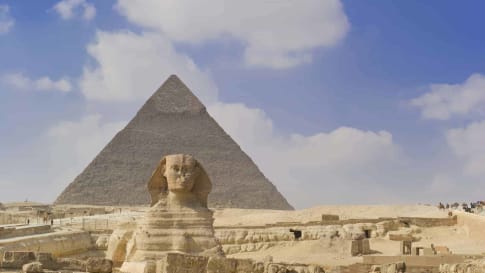
The Pyramids and the Sphinx
Egypt is home to one of the only remaining wonder of the Ancient World: The Great Pyramids of Egypt. The pyramids are monumental tombs for pharaohs from the 4th dynasty and relics of Egypt's Old Kingdom era, constructed around 4,500 years ago.
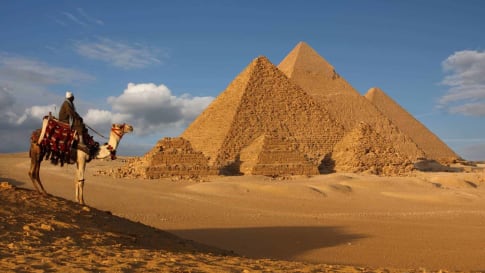
Uncovering Ancient Egypt: What we can learn from Egyptologists
In this article, we will discover some of the pioneers of Egyptology, the great archaeologists, excavators and linguists who have helped us explore, understand and protect Ancient Egypt and its heritage.
